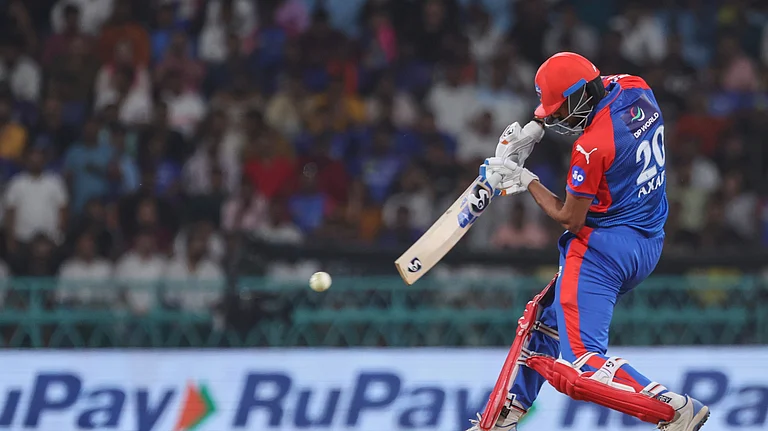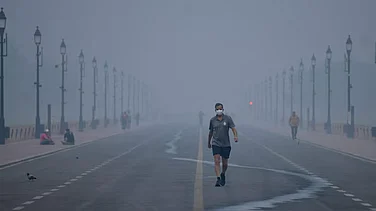Clad in a black burqa and a faded navy blue head coverer, Noor Jahan* leads us into her Nuh home where bottles of soft drinks and water piled up in her courtyard, veranda, and bed on the evening of August 4. The 60-year-old widow had rushed to evacuate her khokha (a temporary shop) after hearing rumours of the administration's bulldozers turning towards Muslim homes and shops following the Nuh violence on July 31. Three days ago, her two teenage sons, both students and another son-in-law were picked up by the police and detained since the violence that broke out during VHP-led Brij Mandal Yatra and spread across Haryana and some parts of Gurugram. Noor is a caregiver to two daughters, both physically disabled since birth and a father-in-law who read verses of the Quran to his granddaughters distressed by the arrests and threats of demolition.“Power tends to corrupt and absolute power corrupts absolutely,”
-- Lord Acton.
The Punjab and Haryana High Court order cited Acton in its notice to the State of Haryana and Nuh DC and Police. The Haryana government and police carried out unchecked demolitions and detentions against the Meo and Muslim population residing in Nuh and Haryana, including Rohingyas living in refugee camps post-violence. After a week of ongoing demolitions, the courts on August 7 halted the demolition drive, asking whether properties of a “particular community” were targeted “under the guise of a law and order problem”, and whether an “exercise of ethnic cleansing” was being conducted. The bench comprising Justice GS Sandhawalia and Justice Harpreet Kaur Jeewan observed that the state authorities undertook the drive “without following the procedure established by law” or issuing any prior notices to the people owning the properties. The same was repeatedly alleged by those affected by the demolitions.“Rendering an area ethnically homogeneous by using force or intimidation to remove persons of given groups from the area”-- The United Nations’s definition of Ethnic Cleansing.
On August 18, Nuh DC Dhirendra Khadgata submitted multiple affidavits before the Punjab and Haryana High Courts pertaining to the demolition drives which continued till August 7. The affidavits revealed that a total of 354 people were impacted by the drive, of which 283 were Muslims and 71 Hindus. Citing the 2011 Census, it said that the district’s total population was 10,89,263 comprising 79.20 per cent Muslims and 20.37 per cent Hindus. The 400-page affidavit establishes the total demolished structures at 443 of which 162 were permanent and 281 were temporary. The official reason cited for all the demolitions is the encroachment of government land, however, officials in Nuh have maintained they had inputs about the involvement of the owners of these properties.
Expressing suspicions over these figures, part of a fact-finding team that visited Nuh, workers' rights activist affiliated with AICCTU, Akash Bhattacharya calls the administration’s projected ratio of demolished properties interesting, illogical, and well-constructed to compare it with the population ratio in Mewat region. “Even if the Hindu properties demolished were involved in the violence, razing properties is not justified. Moreover, bulldozers have been used against the poor, working-class population. It must be investigated who these Hindus are. These households must be probed into to understand on what grounds have their homes and shops been demolished. 71 families are a lot. The locals, multiple media organizations and even we have found that most miscreants belong outside of the Mewat/Nuh region. While the likes Monu Manesar and Bittu Bajrangi remain untouched, poor Hindus have been used as a guise, with their shops and homes turned into rubble.”Breach of Law
Bhattacharya notes that the official figures projected by governments and courts are often much lesser than the actual numbers, adding that in the case of Tughlaqabad demolitions earlier this year, the ASI and police demolished a lot more homes than the court ordered. He also points out how the state uses the internet ban in cases like Manipur and Haryana as a tool for its own objectives under the guise of maintaining law and order. “Due to the internet suspension in Nuh, despite being in the field, we learnt about the demolitions later.”The Haryana and Punjab court issued a notice following a contempt petition filed by residents of Nuh, whose houses were allegedly demolished during the encroachment drive earlier this month. Rahimuddin and five other residents of wards no-13 and 2 filed the plea against Nuh Deputy Commissioner Dhirendra Khadgata and other authorities alleging that the State authorities knowingly and willfully breached a 2020 Court order directing the Deputy Commissioner of Nuh-Mewat to provide adequate time to the residents to relocate before taking possession. “That totality of the facts and circumstances clearly shows that respondents intentionally and deliberately violated the order dated 15.12.2020 wherein ordered that ‘no steps should be taken to forcibly evict petitioners” the plea states.
The terror due to strong police presence has restricted people even out of their terraces and homes. Muslim men and youth have been fleeing their homes, locking children, women and elderly from outside. The situation in Nuh as described by Bhattacharya during his field visit was ‘absurd and negative’. He shares that when the fact-finding team asked the DC to meet with those detained, he put off the subject, “however the low-ranking officers, keen on not being named told us that they were not aware of where the boys and men were kept.” Constructions were demolished at Pingawan, Village Bisru, Village Biwa, Nangal Mubarikpur, Palda Shahpuri, Agon, Adbar Chowk, Nalhar Road, Tiranga Chowk and many other places. Shanties of migrants living in Tauru, at a distance of 20 km Nuh, had been razed in the same week for encroaching on government land, leaving Tauru slum dwellers, mostly ragpickers roofless under the monsoon sky.By August 5, noon, the administration had ravaged hundreds of temporary and permanent constructions belonging to Muslims in Nuh and nearby districts, including Noor Jahan's shop. She had been running her business from the khokha she rented from someone at a price of Rs.400 per month. “My son-in-law used to sit in the shop. He comes from a very poor household and is a nice man. He married my daughter who is disabled and treats us with respect. But the police asked no questions and picked him up along with my son without any information in broad daylight.”
Shopkeepers who suffered a complete loss of livelihood at the hands of the administration’s bulldozers allege the administration notified them minutes prior to the demolitions, giving them no time to even empty their shops. 45-year-old Nawab was illegally detained by the police when he raised objections at the bulldozing of his shops outside the Shaheed Hasan Khan Mewati Government Medical College on the outskirts of Nuh in Nalhar. His papers were torn apart when he attempted to show the court’s interim relief order against demolitions at the site. He also claimed he was abused and harassed in the two-hour-long police custody.
The despairing sight of demolitions carried outside the Nalhar Medical College on 2.6 acres of land comes not only at the cost of losing homes, work and businesses. Medical students, staff, patients, and attendants are equally devastated by the administration’s decision. The crisis of milk, food, tea, medicines and medical tests as a result of the demolitions was never apprehended by the administration. For over a week, no actions were taken by the forces to resolve these crises.
Hateful run-up to elections
On August 4, Haryana home minister Anil Vij was quoted saying the bulldozers are part of the the “ilaaj (treatment)”- “Ilaaj mein bulldozer bhi ek karavayi hai [Bulldozer too is a part of the treatment], as the government probed the communal violence. The bulldozer symbolism, as a threat to ‘criminals’ has become a systematic and popular tool for different state governments who impart bulldozer justice by razing houses and shops belonging to Muslims and Minorities for their alleged involvement in violence and crimes. Following in the footsteps of Uttar Pradesh Yogi Adityanath’s (Ajay Bisht) bulldozer justice, which has gained him the title of “Bulldozer Baba”, Haryana CM Manohar Lal Khattar gained appraisals from his Right-wing followers at the justice met by “Tau ka bulldozer”.Mewat – or ‘Meostan’ or ‘Mini-Pakistan’ in right-wing jargon – is a blotch in Indian geography for the VHP, RSS, and Bajrang Dal bandwagon. It serves as a potentially communal hotbed due to its proximity to New Delhi, Uttar Pradesh, Rajasthan and Gurugram. The region could potentially be manipulated in order to keep the state of Haryana in permanent communal tension and is often blamed for the crime stats in Haryana.
The two parallel fact-finding teams of CPI-ML and AICCTU visited Sohna and Nuh on August 3, 2023, to piece together the correct sequence of events that led to the violence and crosscheck the current ground situation. Their final report titled ‘Violence in Haryana- Organized Hatred, Intimidation, and Violence by Hindutva Groups' -- says that the ongoing terror has a recent history and must be carefully studied. “The recent incidents are part of a pattern of Hindu majoritarian violence centred primarily on cow vigilantism over the last few years. The highly provocative Shobha Yatra, which triggered the violence, has also grown in aggression in the recent past under the patronage of the infamous Bajrang Dal known for indulging in communal violence,” it reported.
It further stated that the cow protection act introduced under Khattar has cleverly been used to foster cow vigilantism leading to multiple lynchings, often being followed by mahapanchayats which call for vengeance against Muslims. the act has been used to polarise the region. “The incidents in Haryana dovetail with nationwide attempts to spread hatred, violence, and fear in the run-up to the 2024 Lok Sabha elections: to maintain Hindu majoritarian rule beyond the 2024 Lok Sabha election, and to produce an irreparably majoritarian social fabric in the long run.”

























